A recent, gruesome accident involving three Railway men has alerted the city to the essential work these employees do in the silence of the night, while the city sleeps. Backbreaking and not without its share of danger, this digging and assessment is what keeps the tracks and trains running
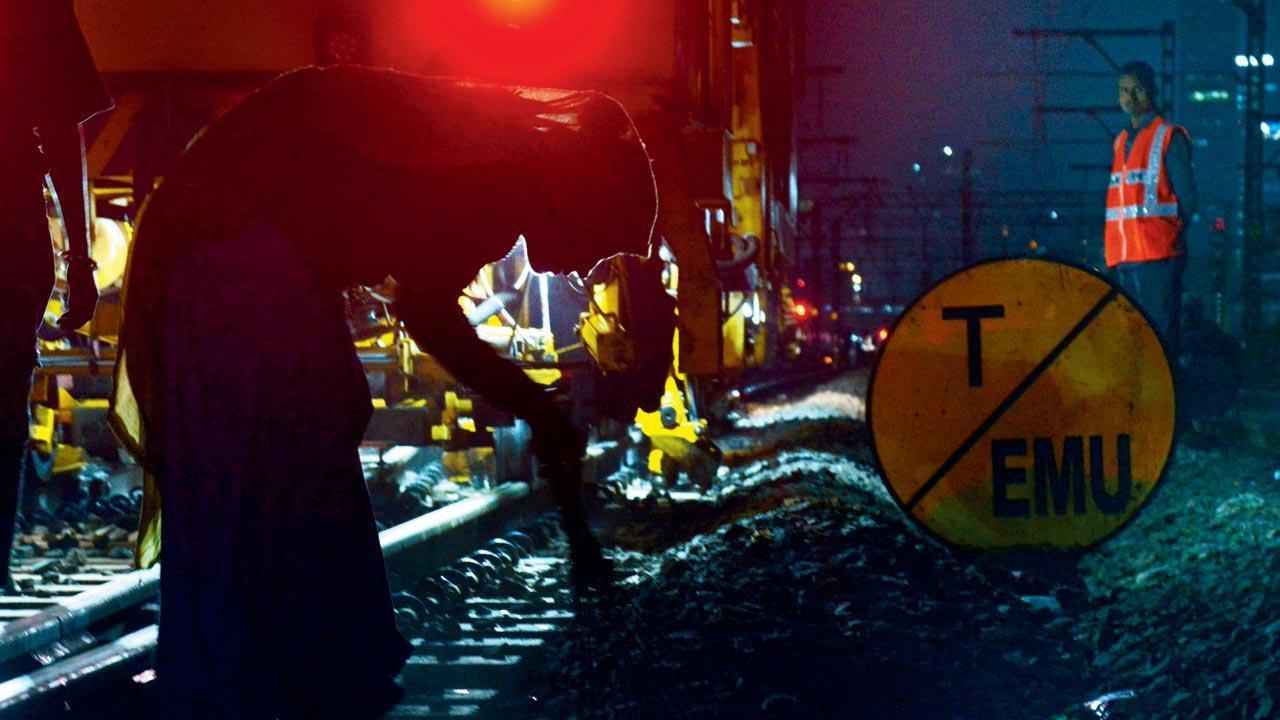
Contractual workers level the track in the stretch between Matunga and Dadar—a time-consuming task that must be finished in three hours. Pics/Satej Shinde
Dadar EAST, 1:00 AM
A young mother cleans up her infant’s business, wraps him up in a fresh but worn triangle of fabric. Almost ritualistically, she leans in and rubs her nose against the toddler’s, and he squeals happily, a sound which echoes through Dadar railway station at 1 am. In the background, screams the rhythmic sound of digging and instructions yelled back and forth between the supervisor and workers on the track at Platform No 12.
The platform is the infant’s daycare, and his caretakers are the roughly 60 men and women who check in on him during their respective breaks as his mother digs, plows and unearths ballast between Matunga and Dadar.
Deep cleaning the tracks has been underway for a month or more. The Railways has tried its best to cut costs by replacing human labour—what would ordinarily need a team of gangmen 500 to 600 strong—with machines. Only concern for the safety of lakhs of commuters using the tracks every hour has stopped them from complete mechanisation.
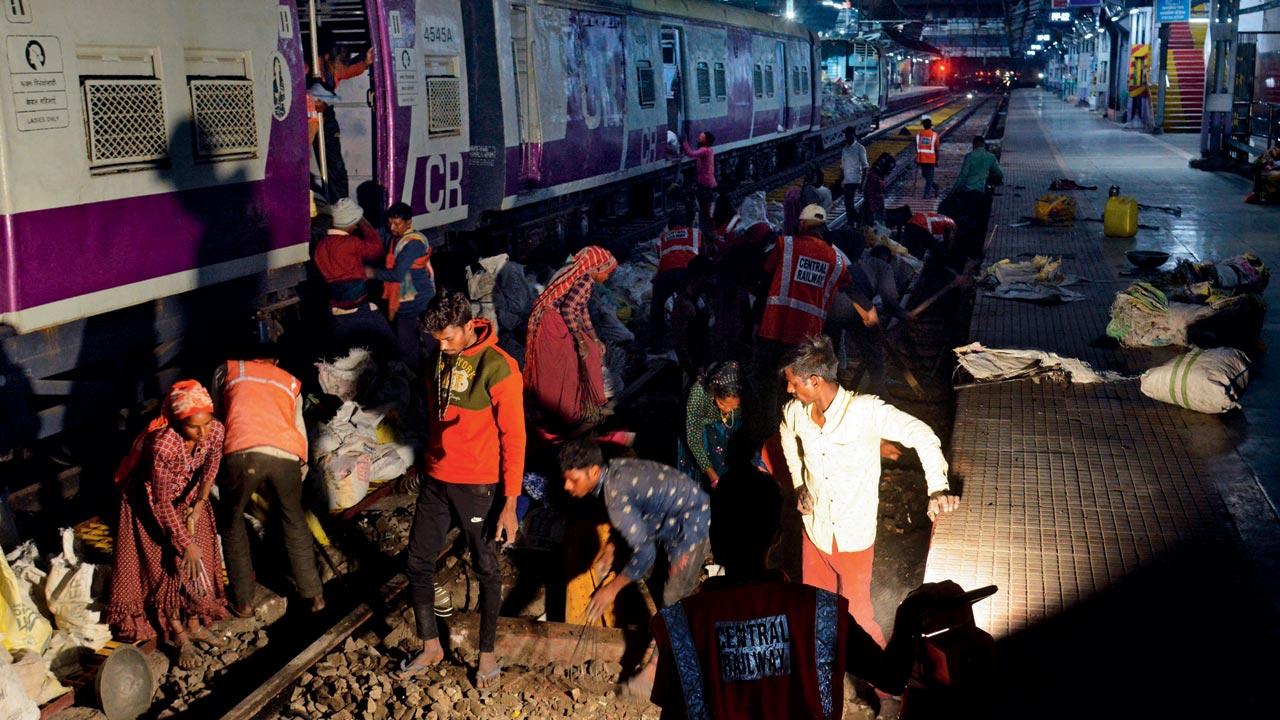 Ballast rocks must be replaced on a timely basis to ensure the stability of the tracks. This involves manually checking each metre of a section
Ballast rocks must be replaced on a timely basis to ensure the stability of the tracks. This involves manually checking each metre of a section
Every track crossing point is inspected by a signal and telecom engineer, while a mechanical engineer visually scans the track under his jurisdiction, inch by inch for cracks in the track. And sometimes, they meet with a tragedy like the one on January 23, when three Railway men came under a train between Vasai and
Naigaon stations.
Though the ballast may be sifted through in bits and pieces each week, its deep cleaning is undertaken every 10 years in the darkness of the night with thoroughness and efficiency by the Mumbai suburban machinery and its contractual workers.
Mahesh, 32, comes from Jhabua district in western Madhya Pradesh, which has very few job opportunities for Adivasis such as him. Three years ago, he moved to Mumbai when his cousin told him of manpower needed to clean up railway tracks. He had heard of, and seen, videos of local trains swollen with commuters. An alarming to any non-Mumbaikar. But his only question was whether the income was a steady stream.
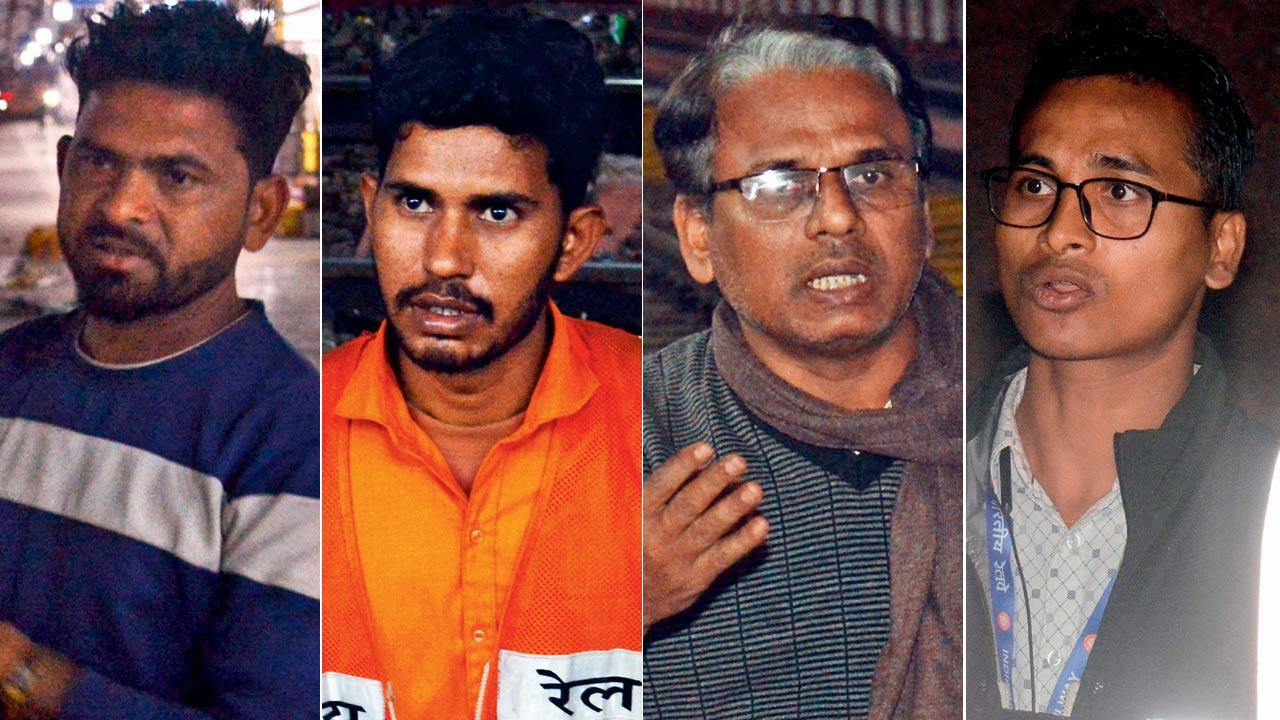 Mahesh, Shankar Meena, Ramkrishna Yadav and Raju Sin
Mahesh, Shankar Meena, Ramkrishna Yadav and Raju Sin
“We get paid Rs 15,000 to 16,000 thousand per month, so it’s actually pretty good,” he says. Is the work back-breaking? “It’s mere three hours,” he shrugs, “then we head home.”
Home for Mahesh and his fellow contract labourers is in Kalwa, where rent is cheap and the demand for daily-wage workers at construction sites, plentiful. The 50-60-person crew will get on the first train for Kalwa soon, and scatter to other working sites after some rest in their one room-kitchen and breakfast, Mahesh tells us.
He seems worldlier than his peers. He walks with confidence, and is vigilant about the safety of his people; whether they are too slow, or over worked. When one woman folds down in exhaustion on the sleeper, he asks someone else to step in. She has been digging ballast non-stop for one hour with a hand rake.
Of the 60 workers present, 19 are female contractual employees, including the young mother. This is work cut out for young bodies; none of the employees are over 30. They don’t undergo any physical tests before they’re hired, but it is something of an unsaid rule to employ the young. One of the female workers tells us what has prepared them for this strenuous labour: foraging wood from the forest and cutting it back home in their villages, where a few of them work as farm hands.
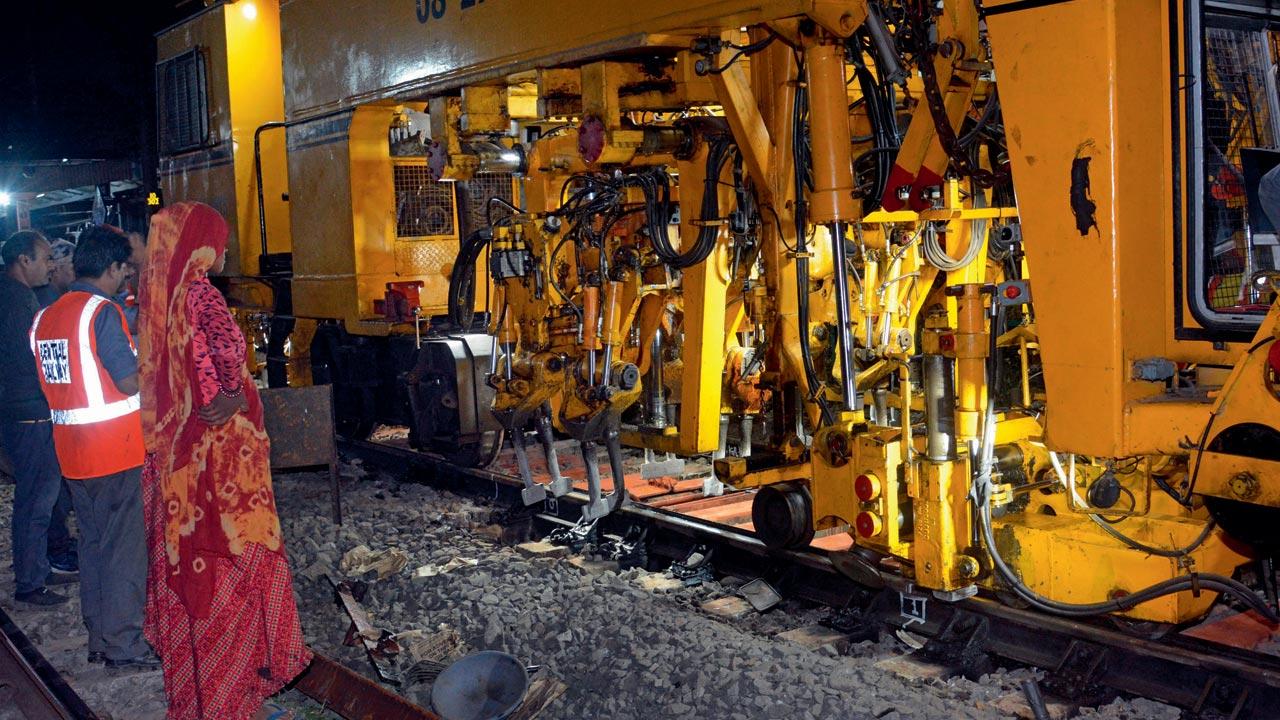 After the tamping of ballast for the three hours, the pathway inspector gives the control room the green signal to run the first train of the day
After the tamping of ballast for the three hours, the pathway inspector gives the control room the green signal to run the first train of the day
The trackman is the first point of Railway authority who monitors contract labourers and conveys instructions from the Permanent Way Inspector (PWI) in charge at each station. Trackmen are classified as Group D employees, and usually belong to SC/ST communities; they are a level above the Adivasi or Khalasi whom they oversee.
To put into context the sheer desperation for more trackmen, the Railway ministry announced 10,000 vacancies for them in 2024, with the new relaxed upper age limit of 33 years from the earlier 31 due to low applications in the previous age group.
Twenty-six-year-old trackman Shankar Meena grew up next to Ranthambore national park. A very different world from his rental in Kalyan, where he lives with a couple of other. “I passed the physical test and examination,” he says, still a bit wet behind the ears from Rajasthan. “We were made to carry 35 kgs of material for 100 meters in two minutes. We were tested on mathematics, general knowledge, reasoning, and science.”
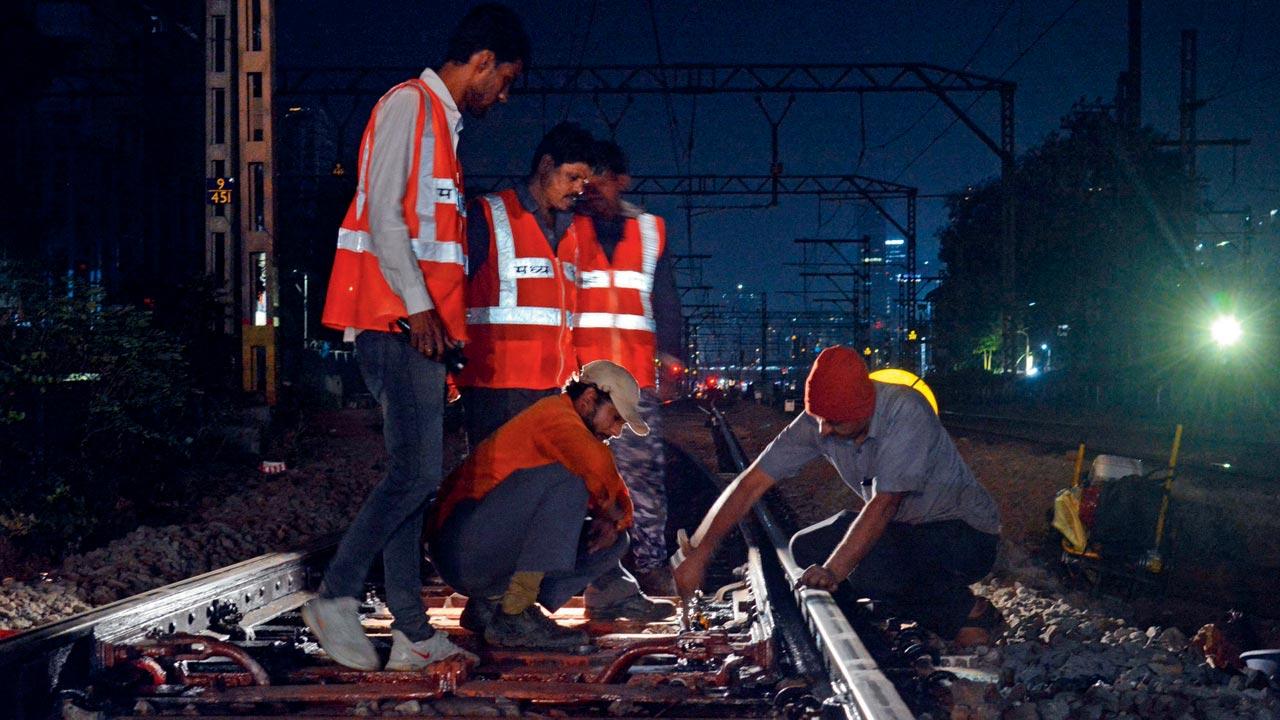 Though much of the tasks are done manually, the tamping of the ballast as well as levelling of the crossover has been gradually undertaken with machines
Though much of the tasks are done manually, the tamping of the ballast as well as levelling of the crossover has been gradually undertaken with machines
Unlike the others, Meena has the luxury of being able to sleep in a bit. “I get up at around 5 pm and head to my reporting head office at Sion station. Sir gives us instructions at around 8 pm, and we start to coordinate the labour,” he says.
“Sir” is Ramkrishna Yadav, Section Engineer between Dadar and Matunga, who started his career 15 years ago as junior section engineer at Byculla station. “Meena is a fresh recruit,” says Yadav. “They were hired in large numbers recently, but most new recruits work on the line for just a few years, and then request to be transferred to work machines which is a less physically tasking job.”
Yadav explains the gravity of the work we see ongoing at Dadar. “The ballast and rocks on the track get embedded into the mud, and don’t provide a hard bedrock for the tracks and sleepers planks essential for the train to run smoothly, with a pumping action. When you are in the train, sometimes you can notice the coach is bouncing a bit, almost like a roller coaster. If this is not maintained, public safety is at risk.”
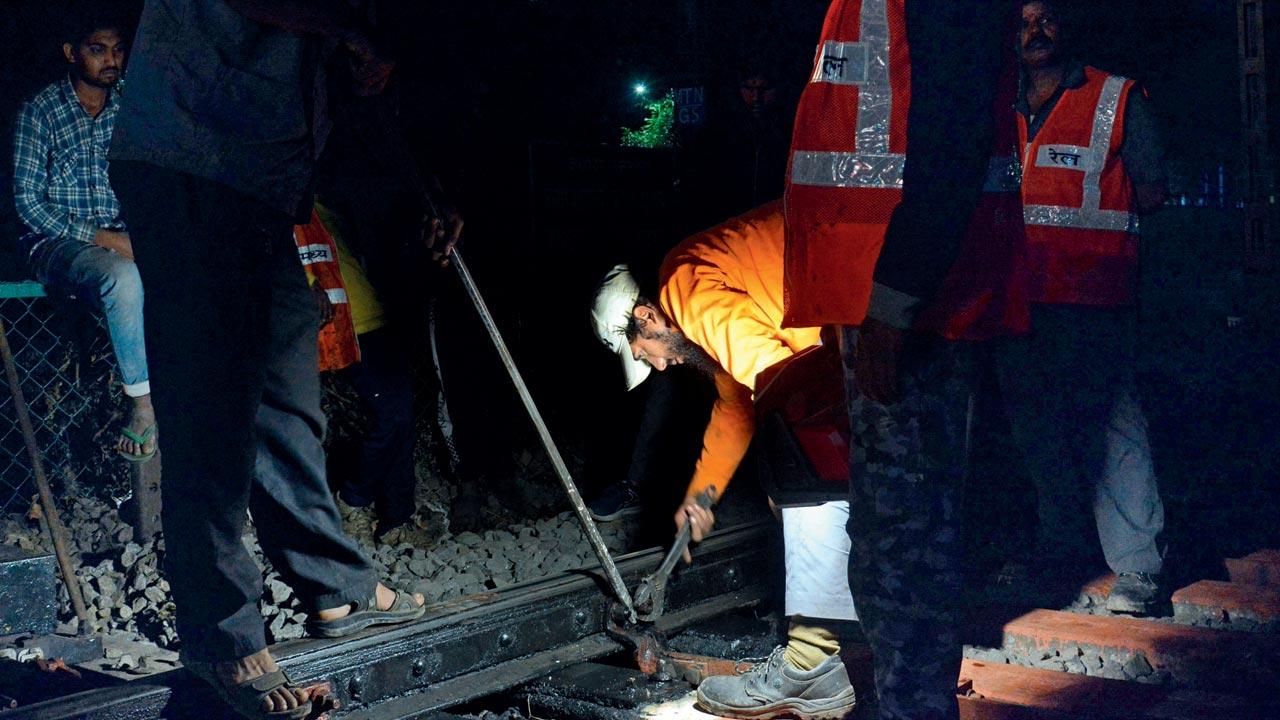
MATUNGA EAST, 2.30 AM
At Matunga station, another group of trackmen and women work a machine that clamps down on the track, pulls it to one side; another end of the machine digs into the freshly laid ballast and seals it. We meet PWI Raju Sin on Platform number 3, at 2.30 am, who is racing against time to finish off two crossing points (where the train switches tracks). “This machine is specially used on crossing points, and is crucial in avoiding derailment. It lifts the crossing point, levels it and places it back on the ballast that is simultaneously being dug up and compressed by another part of the machine,” he says.
Mid-conversation, Sin warns us to get off the track as the Mumbai-Kalyan trains will run soon. “That is, if you want to remain in one piece,” he adds with a macabre sense of humour, common in the Railways.
 Subscribe today by clicking the link and stay updated with the latest news!" Click here!
Subscribe today by clicking the link and stay updated with the latest news!" Click here!










